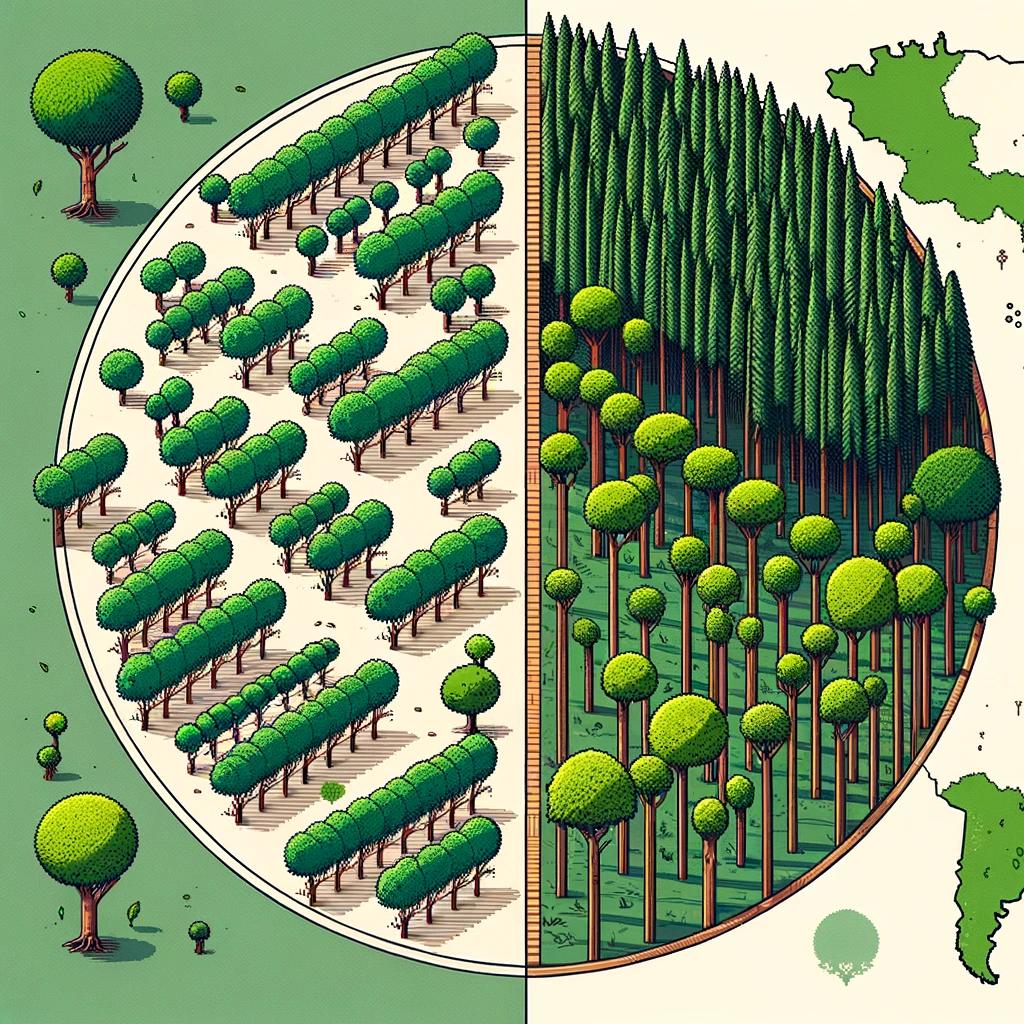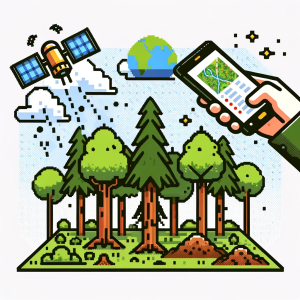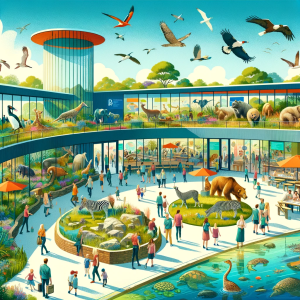
Brazil’s Journey Through Commercial Tree Plantation and Biodiversity Restoration
In the heart of Brazil, a dynamic interplay unfolds between the expansion of commercial tree plantations and the urgent need for biodiversity restoration. This complex narrative, dissected in the research article Conflicts and opportunities for commercial tree plantation expansion and biodiversity restoration across Brazil is a vivid illustration of the delicate balance between human economic activities and environmental conservation efforts.
The Rising Tide of Tree Plantations
Brazil, known for its lush landscapes and rich biodiversity, is facing a surge in demand for wood products. This has led to a significant increase in commercial tree plantations, particularly in tropical regions. From 2000 to 2012, these plantations grew by over 32 million hectares globally. The dilemma is clear: while these plantations can meet the growing timber needs and potentially reduce the pressure on natural forests, they often come at a cost to biodiversity and ecosystem services.
The Collision Course with Restoration Efforts
The growth of tree plantations is not happening in isolation. It’s intersecting with global commitments to restore ecosystems, such as the UN Decade on Ecosystem Restoration and the Bonn Challenge. The challenge is to harmonize these expanding plantations with high-value ecosystem restoration efforts. In Brazil, about 2.8 million hectares of future plantation expansion is forecasted by 2030, with significant portions likely to overlap with critical restoration areas. This intersection raises pressing concerns about the environmental costs and the potential undermining of conservation goals.
A Closer Look at the Study
The study employed sophisticated modeling techniques, including random forest models, to predict the likelihood of plantation expansion across Brazil from 2020 to 2030. It revealed that much of this expansion is predicted to occur in areas of high restoration priority, particularly in the Atlantic Forest, a hotspot for endemic biodiversity. This intersection poses a significant risk to biodiversity restoration efforts and underscores the need for robust, multi-sectoral land-use planning.
The Atlantic Forest: A Case Study in Conflict
The Atlantic Forest biome is a striking example of this conflict. Historically, plantation expansion in this area has often replaced cattle pastures, but it has also led to deforestation and fragmentation of native habitats. This has implications not just for the environment but also for the local communities and their way of life.
Mitigating Conflicts, Maximizing Opportunities
The study emphasizes the need for strategic land-use policies to navigate the trade-offs between restoration and production objectives. It suggests that plantation expansion in low-restoration value areas could meet timber production needs with minimal biodiversity costs. However, it also warns against oversimplifying this issue, as plantation expansion in high-value restoration areas could, in some cases, contribute positively to biodiversity restoration under certain management practices.
The Road Ahead
As Brazil marches towards 2030, balancing the dual goals of meeting timber production needs and enhancing biodiversity becomes increasingly crucial. This requires not just scientific insights, like those provided in this study, but also collaborative efforts among governments, private sectors, and local communities. It’s about making informed choices that respect the delicate balance between human needs and environmental sustainability.
In Conclusion
Brazil’s story is not just about trees and timber; it’s a microcosm of a global challenge. As we strive for development and restoration, this research offers a roadmap for navigating these complex, often conflicting objectives with a nuanced understanding of local ecosystems and socio-economic dynamics. It’s a call for thoughtful, inclusive, and sustainable land-use planning.
Unlock the Secrets of Science:
Get ready to unlock the secrets of science with ‘This Week in Science’! Our newsletter, designed specifically for educators and science aficionados, delivers a weekly digest of revolutionary research, innovative discoveries, and motivational tales from the scientific frontier. Subscribing is your key to a treasure trove of insights that can revolutionize your approach to teaching and learning science. Sign up today at no cost and start a journey that deepens your understanding and passion for science.



